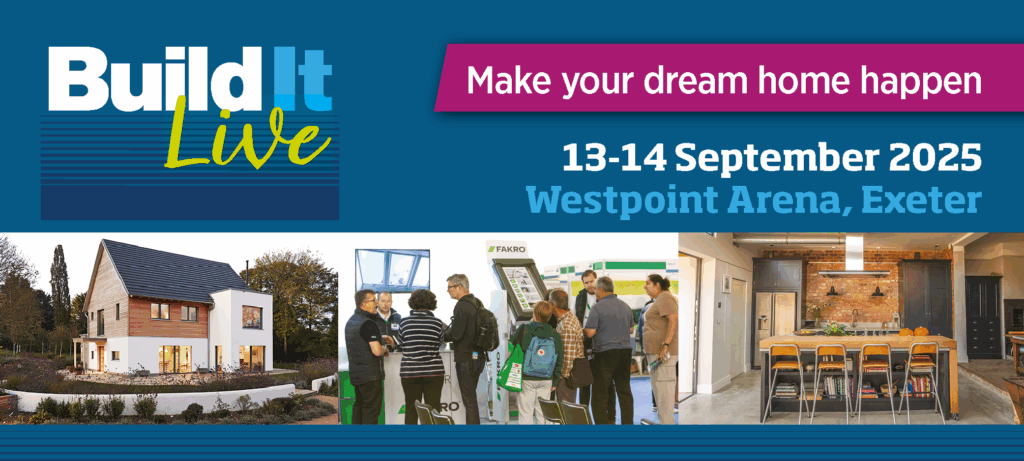
Let us help at Build It Live
Claim your two free tickets here!
Let us help at Build It Live
Claim your two free tickets here!Whether you’re planning to bring a derelict cottage back to life or turn a tired house into your dream home, a renovation project can cost more than expected. One of the most important parts of the process is financial planning.
Money can make or break a home renovation project. Getting your finances right isn’t just about how much you can borrow. It’s about understanding the renovation journey, working out realistic budgets, and securing the right mortgage product that’s flexible enough to support the ups and downs of this type of development.
A lot of people assume that once they’ve got a mortgage offer, they can just crack on. But when you’re buying a property that’s in poor condition – or even uninhabitable – you’ll often need a very specific kind of finance product. That’s where renovation mortgages come in. Here’s what you need to know.
It’s a specialist type of loan for people buying a home in need of a refurb. While a traditional mortgage is based on the value of a property at the time of purchase, a renovation mortgage accounts for property value when the works are complete. This helps to fund home purchases that perhaps don’t have a working kitchen or need structural repairs.
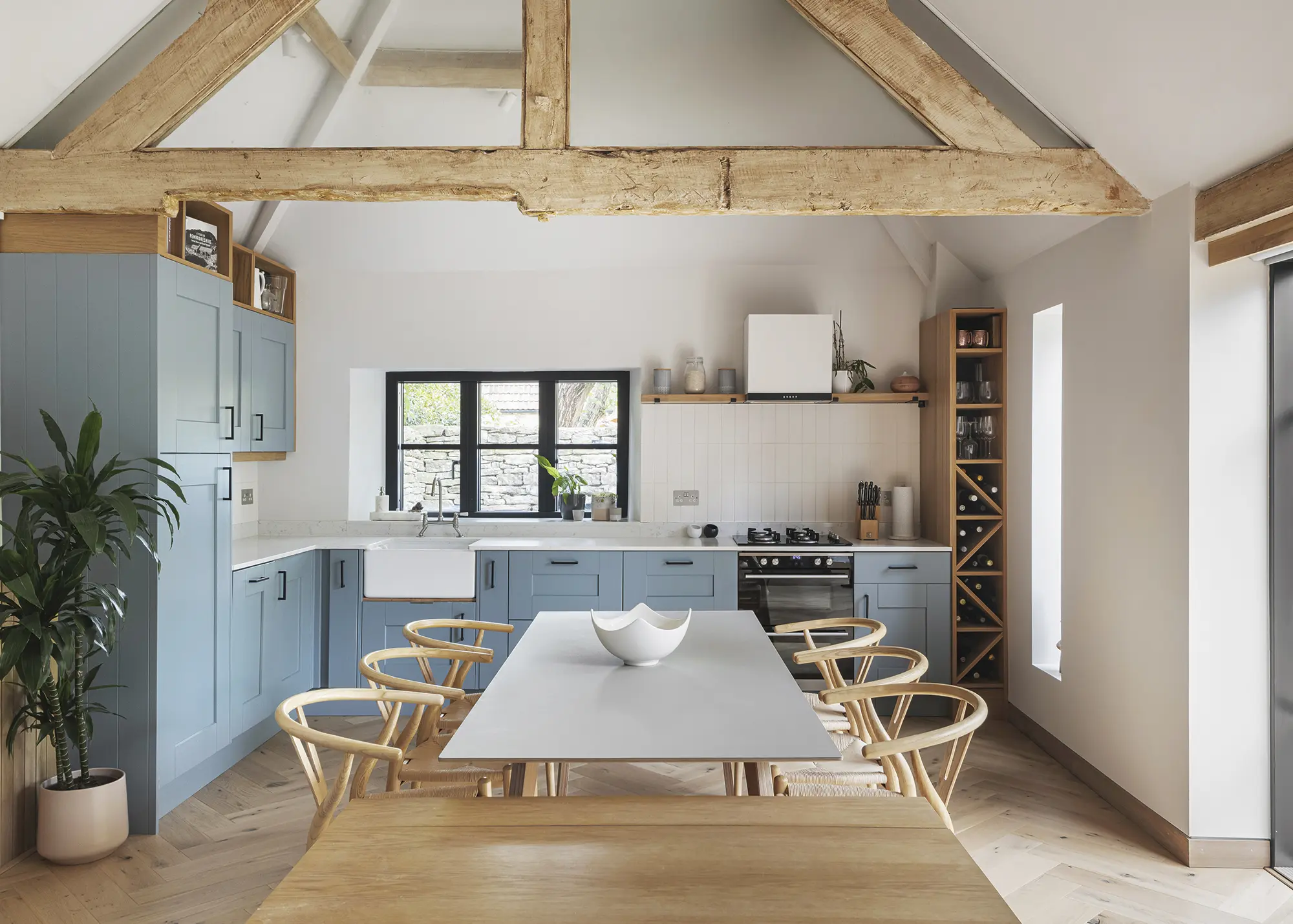
Rhodri and Meinir Jones completely renovated their small barn and added a single storey annex, built with structural insulated panels from SIPS@Clays. The project cost £364,000 and took 156 weeks – Rhodri, an architect, took a hands-on approach and tackled the work in phases. Photo: Pete Helme
Unlike regular mortgages, which usually release funds in one go, renovation products are structured to release money in stages. There’re lots of different products available, some of which are engineered to help cashflow. You can opt for arrears or advance stage payments – either getting money after each stage of work is complete, or before each phase begins, based on estimated costs.
This flexibility along with the option to borrow against the future value of the property, makes a renovation mortgage ideal for anyone taking on a project that is going to require a lot of upfront work.
Not every home renovation project is the same. Some might involve a cosmetic refresh – new flooring, a kitchen refit, knocking through a few walls – while others involve gutting the place completely or even doing structural rebuilds. Renovation mortgages are ideal for the more ambitious projects that wouldn’t qualify for a standard mortgage because they’re not technically habitable. That might be a house with no heating, plumbing, or electrics. Or when taking on a property that’s no more than a ‘shell’ that needs everything from a new roof to underpinned foundations.
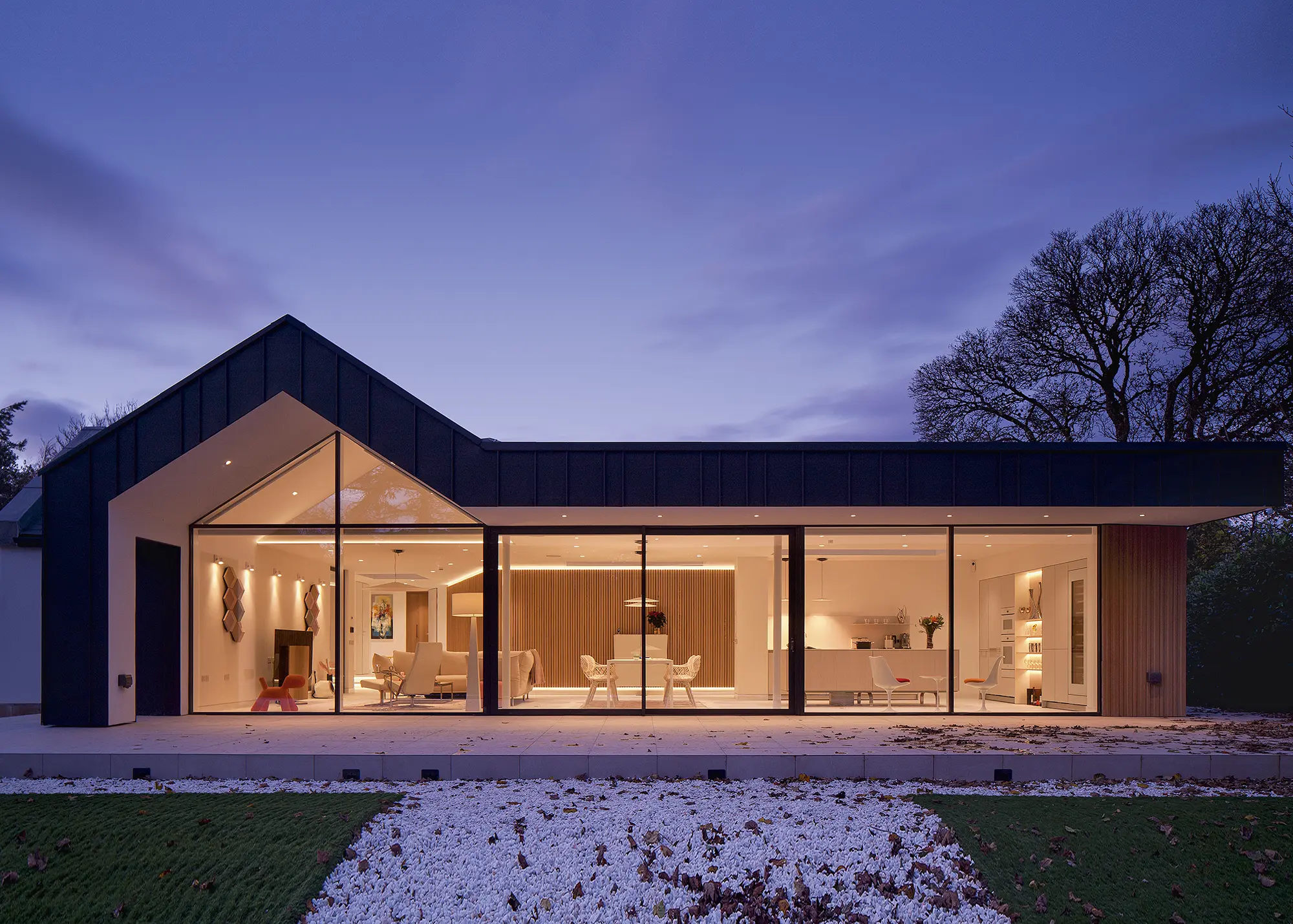
Build It readers Linda and Vic Woods undertook a complete renovation and retrofit of this 1980s bungalow, transforming it into an ultra-sleek, modern abode that’s unrecognisable from its original aesthetic. Clad in zinc and with plenty of full-height glazing, this unique home – designed by NVDC Architects – suits the owners’ lifestyle perfectly. The project took around 11 months to complete and cost £731,000. Photos: David Barbour
Renovation mortgages are also a great choice for barn conversions or when converting non-residential buildings into homes. Other projects might include period properties in need of sympathetic restoration, properties with damp or subsidence issues, or even unmodernised homes stuck in the 1970s – all of these can benefit from this type of funding. When it comes to the suitability of a renovation mortgage, the key is the potential to add value. They help to bridge the gap between a property’s current state and value what it will be worth once it’s finished.
CASE STUDY What to budget for quality fenestrationClapgate House is a culmination of one family’s dream to revamp their home, creating better living spaces, bringing the outside in and achieving high-quality finish. The owners chose Southern Contractors to realise the project. The existing parts of the house underwent a full refurb – including replastering, upgraded flooring and adding new bathrooms, as well as knocking through to add a full double-storey side extension, providing around 90m2 of extra floorspace. The new part of the building features a complementary roof pitch, plus details such as off-white painted brickwork and sage green detailing at bargeboards, window cills and DPC level – giving the impression this wing has always been there.
Getting the fenestration right is key to any project – helping deliver the right look and representing a core part of your project budget – so choosing a quality supplier is vital. “We always use TP Improvements, as they offer an amazing service for our clients,” says Rob Quayle, owner of Southern Contractors. “The decisions we made on the glazing were a collaborative effort between us, TP and the homeowners.” Most the windows and external doors are timber, with the project encompassing nine casement windows, a bay window and two fixed windows – all with flush sashes – with solid black ironmongery from Glyngary. This is complemented with a single stable door (boarded and insulated in the bottom section, with toughened glass above), solid front door with ring door knocker and open-in letterbox, plus a pair of flush French doors. All these timber products were supplied in kiln-dried West African sapele and factory-finished with three coats of microporous paint. To achieve that coveted indoor-outdoor connection, Cortizo’s thermally-broken COR Vision aluminium sliding door was specified – featuring elegant 20mm sightlines to open up the views. “Everyone’s delighted with the project, including the clients, who’ve asked us back to do extra bits and pieces since,” says Rob.
|
Renovation mortgages are more complex than typical home loans, so preparation is essential. Lenders are investing in you and your project just as much as in the property itself. They’ll want to see you’ve done your homework. You’ll need a clear renovation plan that includes architectural drawings (if necessary), a full breakdown of costs, a build schedule, and cashflow. It all must make sense, so the more detailed, the better to demonstrate that you’ve thought everything through.
To prove your case, you’ll need realistic quotes from builders, a contingency for unexpected costs, and confirmation of planning permission. Some lenders might also require full plans approval for building control before too much money is released.
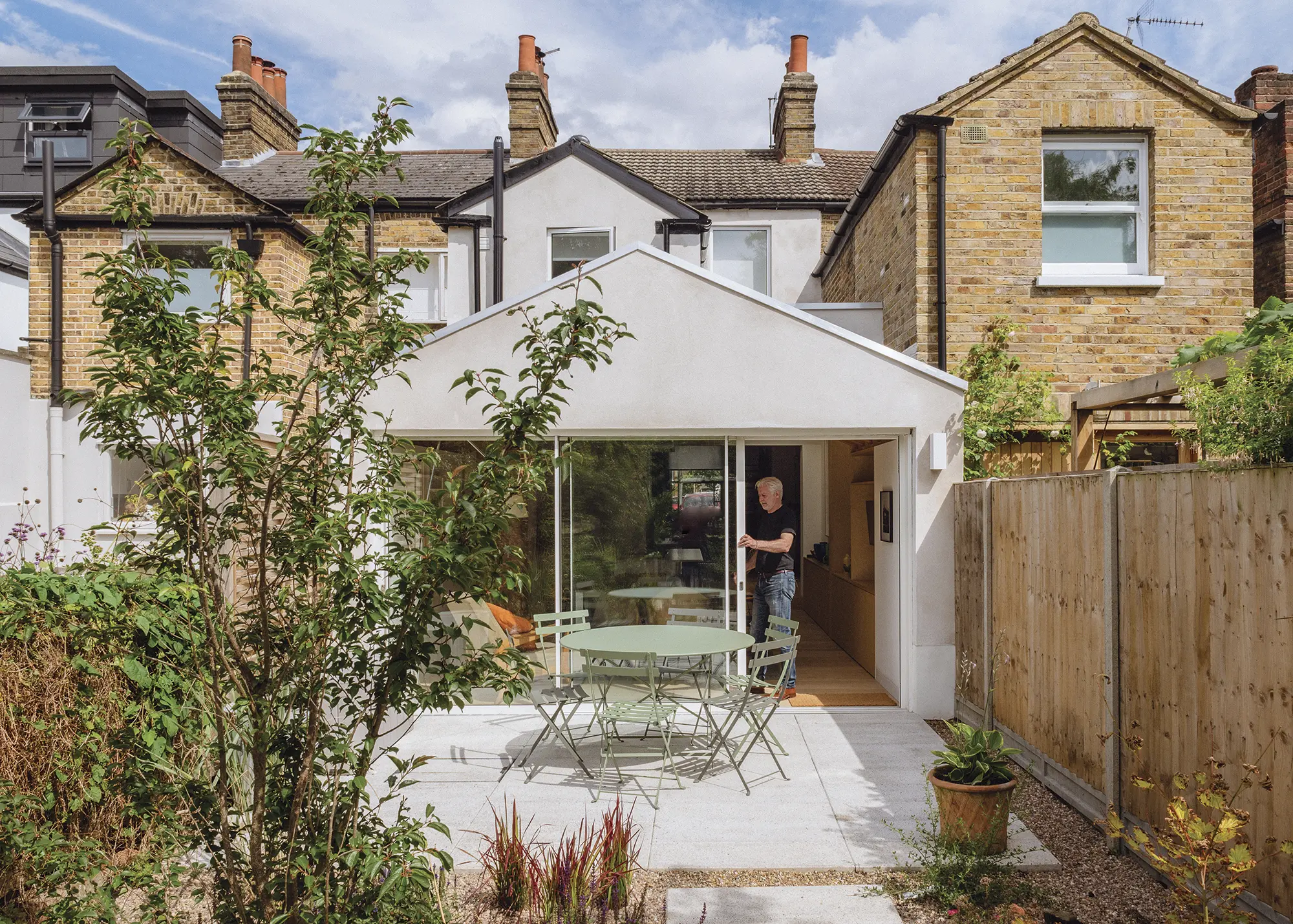
This project in Walthamstow, London, saw the transformation of a Victorian property into a light filled, modern home, thanks to a clever renovation and extension. A vaulted ceiling and exposed beams pack in plenty of character to the space, and sustainable finishings add to the healthy living environment. Designed by Whittaker Parsons, the project cost £162,000 and took 11 months to complete
Affordability plays a big part, and even though renovation mortgages are based partly on the property’s end value, lenders want reassurance you can afford the repayments. So, make sure your finances are in good shape – having a decent credit score, low existing debt, and a steady income all helps. Some lenders will also look at your wider financial habits. Do you save regularly? Do you live within your means? Do you like a flutter? It all counts.
Then there’s the deposit. Traditional mortgages usually require a deposit of at least 5% to 10% of the purchase price, whereas renovation mortgages expect a bit more – typically 15% to 25%, depending on the lender and project.
It’s all quite complicated, so working with a mortgage adviser who specialises in renovation finance can be a huge help. They understand the complexities of renovation projects so are able to navigate you through them, helping to pull together the best application to secure the best deal.
Renovation mortgages might unlock a project, but because they’re more complex they come at a cost. Arrangement fees and interest rates are usually higher than for standard mortgage products, and then there’s the added expense of a specialist mortgage broker to navigate the process and valuation fees to draw down funds. It all adds up, but it’s worth remembering that the added expense is short lived; you’re free to switch to a more competitive mortgage product at the end of the project.
QUICK GUIDE What are green mortgages for renovations?If your renovation plans include energy efficiency upgrades, it’s worth exploring green mortgage options. These are home loans that reward borrowers for investing in energy-saving measures by providing lower interest rates, cashback offers or more generous borrowing terms. Green mortgages are usually linked to the property’s Energy Performance Certificate (EPC) rating. If your home is rated A or B – or you’re to bring it up to that level – you may be eligible. Qualifying improvements might include insulation upgrades, heating improvements, installing photovoltaic and solar panels, fitting triple glazed windows, or a range of other renewable energy technologies. Most high street lenders offer green mortgages and more providers are now supporting eco renovations with flexible finance arrangements. Your lender will usually want to see either a retrofit plan or energy assessment, along with quotes and timeline for the upgrades. Some release funds in stages as the work is completed, just like with a renovation mortgage, making cashflow easy to manage. Green mortgages support an approach that focuses on longer-term benefits of living in a more energy-efficient home that costs less to run. They also offer reduced mortgage rates or cashback deals that will save money, depending on the extent of improvement to your homes EPC rating. A house with an array of green technologies typically commands a higher resale value. Running costs will be lower and you’ll also be doing your bit for the environment, helping to reduce your home’s carbon footprint by creating somewhere that’s healthier to live in and more energy efficient. Aside from the perk that an eco build is often more comfortable to live in, a major advantage of a green mortgage is that lenders will often lend more money. By considering the reduced running costs and a potential improvement to the home’s value, lenders are able offer larger loans, provided you pass the affordability test. |
If you already own the property or secured a standard mortgage before realising the scale of work required to improve it, there are still a few options. Firstly, it might be worth reviewing your financial plans. For those with substantial renovation, it could be worth redeeming the current mortgage and switching to a specialist mortgage product, better suited for the project.
Some of these specialist products are designed to release funds based on the cost at each stage – ideal if you need the money upfront to keep the project on track. It might be worth considering a traditional remortgage.
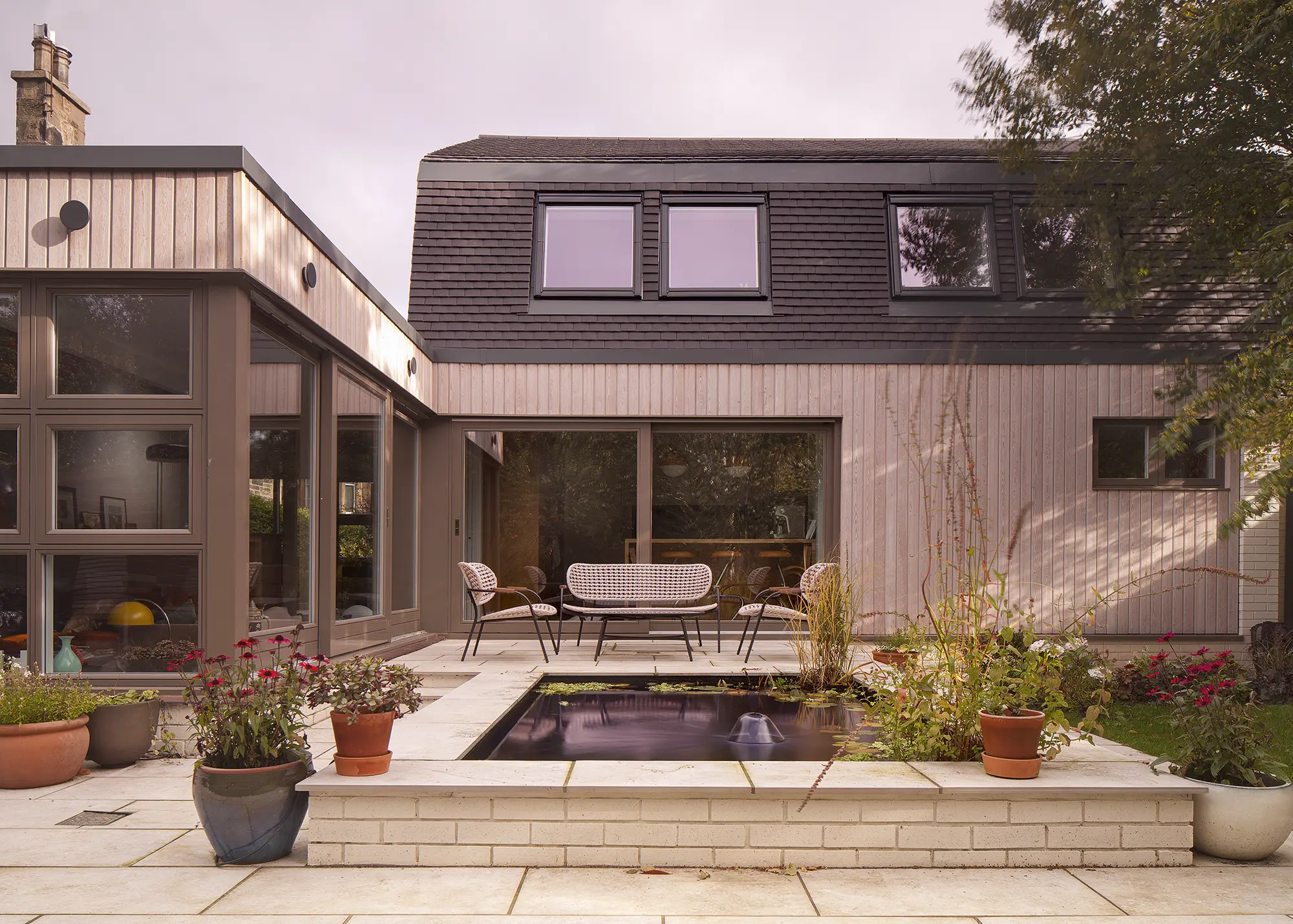
For their extension and renovation project, Lia and Allan Gill transformed a 1970s bungalow into a characterful, contemporary home. The project cost £240,000 and took six months to complete. The house now has easy access to a lovely landscaped garden, and the extension offers a new entrance, bathroom, dressing room and a vaulted master bedroom. Photos: David Barbour
If your property’s value has gone up, you might be able to release equity to fund the renovation work. Alternatively, your current lender may offer a “further advance” which means letting you borrow more on top of your existing loan. This tends to be quicker and simpler than remortgaging, although not every lender will offer it for major works.
Another alternative might be a bridging loan. Bridging loans provide short-term financing until a longer-term solution is arranged. These might suit you if you’re taking on a substantial renovation, and especially projects that render the house uninhabitable during works.
A successful renovation project requires much more than the ambition to create a wonderful home from the bones of a dilapidated house. It requires a good sense of what’s realistic along with thorough financial planning and a flexible funding model that accommodates the inevitable renovation challenges.
For the right kind of project, renovation mortgages can be a lifeline for home improvers who are willing to put in the work to transform unloved buildings into beautiful, functional homes. And if you can combine the renovation work with high-quality sustainable upgrades, then green mortgage products can offer even more financial benefits and environmental rewards.
Before doing anything, perhaps the most important factor to have clarity on, is how much money you are willing to spend on your home renovation project. A good architect will work hard to make your money go as far as it possibly can. It is also important to consider that at the beginning of a project, a budget is primarily a goal. Cost planning is a process, so once you have set your goal – ie your budget – the next step is to put your brief into a spreadsheet, breaking this down by element or item, with costs against each.
Start by deciding what you need to allocate for the basics (e.g. walls, floors, bricks, plumbing, insulation, etc). Then, see what’s left for the things you’d like to get creative with (e.g. tiles, joinery, light fittings, radiators, ironmongery, etc). The more thorough you can be at the cost planning stage, the better off you will be going forward. If you know what you want to spend and have an idea of how this can be spread across different elements, you’ll make short work of the design process, and the right solutions will present themselves.
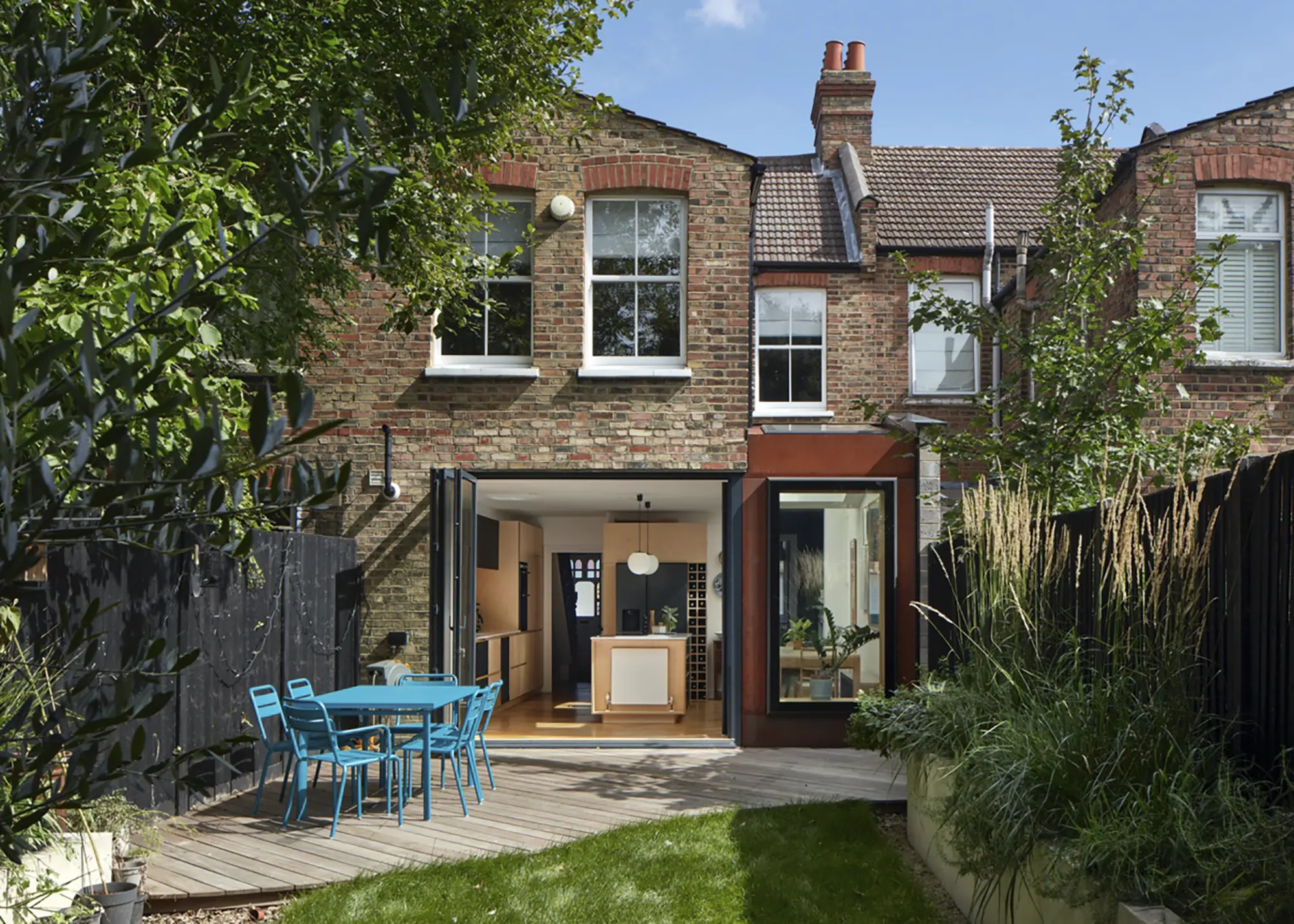
Robert Rhodes Architecture + Interiors have renovated, extended and reconfigured this once-neglected terraced house in North London, transforming it into a light-filled, joyful family home. Photo: Matt Clayton Photography
The best place to start if you’re solely looking to boost a home’s value, is to speak to an estate agent. They will likely say the best way to increase value is to add square footage. If you’re looking to extend your house in a cost-effective way, then I’d suggest starting with the loft. Altering a timber framed roof is likely to be cheaper than adding a brick and block extension, for example, at ground level.
It is also likely that adding bedrooms and bathrooms will boost a home’s value more so, than increasing the living area. Plus, if you’re your house is not situated in a conservation area, and it doesn’t have a listed status, it’s possible that a loft conversion may also fall under permitted development (PD), which can often simplify the renovation process further.
The short answer is no; you don’t need an architect to renovate a house. In my opinion, it comes down to how much faith you have in your own skills, how much time you have to do things yourself, how much risk you are comfortable to take on, and how much of a safety net you have to spend your way out of a problem.
In most home renovation projects, in my opinion, there is simply too much money at play to go without the help of an architect. One of the main benefits is the sense of support, security, and clarity that architects can provide. Managing a renovation is not an easy or transparent process, and it can be daunting and stressful.
The right architect will flip that on its head and make the whole process a joy. There is no reason it shouldn’t be fun – homemaking is fun, and thinking about how to make your property the best it can, should be an exciting prospect. An architect’s experience can instil confidence that the right things are being considered at the right time, in the right order, and to the right degree. They should be able to keep everything in order and inspire the rest of the team to work together to achieve something wonderful. Most importantly, the right architect should be able to interpret your requirements and give you something you never would have come up with on your own.
In addition to expertise, the right architect will have valuable connections to reliable trades and contractors. They will know how to assess their performance, and will work tirelessly in the best interest of the project to hold people to account.
An architect’s input is tremendous value for money, too. On a typical project, our fees might represent 10% of the client’s overall spend. For that money, you will get specialist guidance, the benefit of 20 years’ experience, and something beautiful, functional, and unique as a result.
It’s best to ask a tax professional about your specific project. However, that being said, many of our projects have benefited from favourable tax incentives. For example, when renovating a house that has been registered vacant for 2 or more years, our clients have been able to reduce the VAT on most of the construction works from 20% to 5%. A similar tax incentive also exists for projects that require a change of use – such as de-converting a house that had previously been divided into flats.